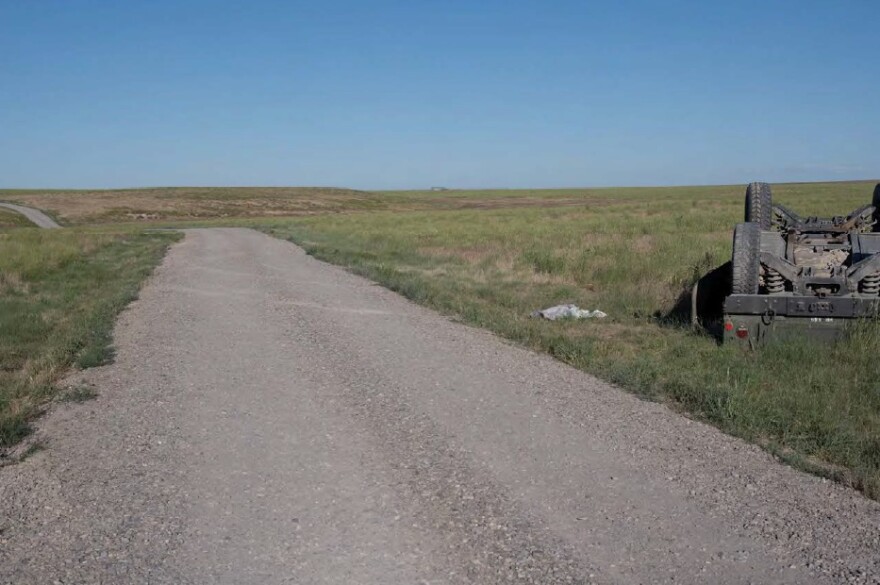A series of broken rules and an environment of sloppy oversight led up to a Humvee crash last year that killed a young woman from Eagle River, according to facts laid out in an Air Force accident investigation report released last week.
The report provides the first public, detailed account from the military about what was happening on its Idaho base leading up to 19-year-old Air Force ROTC cadet Mackenzie Wilson's death on June 24.
Idaho is already prosecuting another teenage ROTC cadet who was behind the wheel for manslaughter. But after months of Wilson's mother pleading for answers, it’s still unclear if the military will take any disciplinary action against its own personnel, or make any changes to its base operations.
The report does not directly address those topics. It does, however, explain why Wilson was in the Humvee in the first place. It wasn’t training, as the Air Force’s initial announcement about the death suggested.
Here’s how the bombing range manager, who said he routinely let untrained visitors drive Humvees, explained to investigators why he let the cadets drive in the first place.
“And the intent isn’t to obviously -- is not to teach them how to drive the Humvee,” the manager said, according to an interview transcript in a more complete version of the report the Air Force gave Wilson’s mother last week. “The intent’s just to give them a little experience right? Of – of – to coming out. It’s a morale thing, too, you know?”
Air Force rules require training, certification and licensing to drive Humvees.
Wilson and the 18 other ROTC cadets chosen for the four-day event at Idaho's Mountain Home Air Force Base were college students – not in the military, but in a program that prepares them to be officers.
The report says they were given unsupervised access to drive the old Humvees around the Saylor Creek Bombing Range on the last day of the program.
At one point, Wilson and two other cadets took turns behind the wheel of a Humvee doing donuts. A civilian working in a range tower noticed dust kicking up and yelled at them to knock it off. The cadets didn’t hear him, according to interview transcripts.
Minutes later, the driver lost control of the Humvee on an unnamed gravel road between range buildings. It flipped and crashed. Only the driver had a seatbelt on.
A cadet riding in the backseat was ejected, but was able to call 911. He made his way back to the Humvee and told the operator that Wilson was pinned under the Humvee with no pulse.
In the aftermath, Air Force investigators found out that the Humvees the cadets were driving were procured for use as bombing targets, and were not authorized for use as transportation. The range manager said he and other personnel regularly used the Humvees to support range operations.
The Humvees weren’t kept up in line with Air Force standards, and maintenance wasn’t documented. The investigators also found that the tires on the crashed Humvee were mismatched, which could have affected how it handled and contributed to losing control.
The Air Force’s lead investigator briefed Wilson’s mother, Jessica Swan, last week about his report. She wept.
In a text message, she said she was profoundly devastated, and that Air Force leadership was acutely negligent.
“(Their) inability to make sound decisions cost Mackenzie her life,” she wrote.
Swan said if the range manager or Air Force leadership had followed any one of the broken regulations, “Mackenzie would be alive.”
The range manager’s name is redacted in the Air Force’s report, but he identifies himself in interview transcripts as a longtime civilian employee who previously worked as chief of safety at Eielson Air Force Base near Fairbanks and Osan Air Base in South Korea. He said he even served as an accident investigator himself on three past cases.
The investigator in this case told the range manager he was suspected for the crime of misuse of government property. An ROTC officer who was supervising the cadets that week was also informed he was suspected of dereliction of duty under military code.
An Air Force public affairs officer at Mountain Home Air Force Base said in an email that higher-ups are reviewing the investigation to decide on next steps.
“We take very seriously our responsibility to address the contributing factors and events noted in the report in order to prevent similar mishaps in the future,” Master Sgt. Eric Harris wrote.
Air Force officials with Air Education and Training Command, which oversees the ROTC program, said they are also committed to applying lessons from the investigation. For example, they said now the schedule of events for similar ROTC events must be reviewed and approved in advance by safety and command officials.
The AETC officials also shared the status of the two officers who accompanied the cadets on this trip. One retired, as previously scheduled. The other is still in Air Force ROTC; no decisions have been made yet about possible disciplinary action.
Editor’s note: This story has been updated with comment from the Air Force command that oversees ROTC programs.





